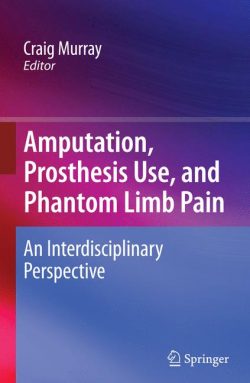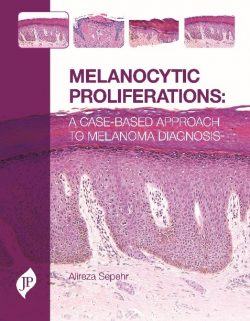This new edition now titled “Human Chromosome Variation: Heteromorphism, Polymorphism and Pathogenesis” provides the reader with an up-to-date overview of microarrays, fragile sites, copy number variations and whole genome sequencing. Greatly expanding the discussion of microarray analysis in the previous edition of the book, are new chapters on microarray and genomic analysis, plus comprehensive tables on the subtle microdeletions and microduplications that are found on each chromosome, including 235 recurring copy number variants that are associated with well-established or emerging chromosomal syndromes. The current edition features concise information on cytogenetic methods and applications, extending these discussions to DNA analysis and genome sequencing. Sections on euchromatin, heterochromatin, FISH pattern, fragile site, copy number, and DNA sequence variation are integrated with actual clinical examples from cytogenetic laboratories and from clinical practice. The principles that allow for the distinction between benign chromosome / DNA variation and pathogenic heteromorphisms / polymorphisms are discussed and include references to the latest organizational guidelines and genomic or population databases.
The two previous incarnations of this book: the ‘Atlas of Human Chromosome Heteromorphism’, and ‘Human Chromosome Variation: Heteromorphism and Polymorphism’ have been standard reference works in most cytogenetic laboratories, used by laboratory directors and clinicians all around the world. While widely used sections from the previous edition on cytogenetic technologies and heteromorphisms are retained intact the present volume adds extensive material on copy number variations (polymorphisms detected by microarray analysis), fragile sites in disease and cancer, and practical views on interpreting emerging technologies, including whole exome sequencing.
This book should be of interest to clinicians, technicians and students who are or will be exposed to DNA and/or chromosome analysis and the data derived from these continuously developing techniques. This fully updated book volume will bring the reader up to speed on the latest technologies, their applications, benefits and drawbacks and as such, is a must read for anyone with an interest in DNA and chromosome analysis and the distinction between benign variation and pathogenic mistakes.
Part I Human Chromosome Methods and Nomenclature
1. Introduction
2. Chromosome Heteromorphism
3. Frequencies of Heteromorphisms
4. Clinical Populations
5. Euchromatic Variants
6. Chromosome Heteromorphism (Summaries)
Part II. Genomics And DNA Polymorphism: Molecular Cytogenetics And DNA Diagnosis
7. Fragile Sites
8. Chromosome Variation Detected by Fluorescent In Situ Hybridization (FISH)
9. Array-Comparative Genomic Hybridization/Microarray Analysis: Interpretation of Copy Number variants
10. A CNV Catalog
11. Gene and Genome Sequencing: Interpreting Genetic Variation at the Nucleotide Level
12. Summary
This new edition now titled “Human Chromosome Variation: Heteromorphism, Polymorphism and Pathogenesis” provides the reader with an up-to-date overview of microarrays, fragile sites, copy number variations and whole genome sequencing. Greatly expanding the discussion of microarray analysis in the previous edition of the book, are new chapters on microarray and genomic analysis, plus comprehensive tables on the subtle microdeletions and microduplications that are found on each chromosome, including 235 recurring copy number variants that are associated with well-established or emerging chromosomal syndromes. The current edition features concise information on cytogenetic methods and applications, extending these discussions to DNA analysis and genome sequencing. Sections on euchromatin, heterochromatin, FISH pattern, fragile site, copy number, and DNA sequence variation are integrated with actual clinical examples from cytogenetic laboratories and from clinical practice. The principles that allow for the distinction between benign chromosome / DNA variation and pathogenic heteromorphisms / polymorphisms are discussed and include references to the latest organizational guidelines and genomic or population databases.
The two previous incarnations of this book: the ‘Atlas of Human Chromosome Heteromorphism’, and ‘Human Chromosome Variation: Heteromorphism and Polymorphism’ have been standard reference works in most cytogenetic laboratories, used by laboratory directors and clinicians all around the world. While widely used sections from the previous edition on cytogenetic technologies and heteromorphisms are retained intact the present volume adds extensive material on copy number variations (polymorphisms detected by microarray analysis), fragile sites in disease and cancer, and practical views on interpreting emerging technologies, including whole exome sequencing.
This book should be of interest to clinicians, technicians and students who are or will be exposed to DNA and/or chromosome analysis and the data derived from these continuously developing techniques. This fully updated book volume will bring the reader up to speed on the latest technologies, their applications, benefits and drawbacks and as such, is a must read for anyone with an interest in DNA and chromosome analysis and the distinction between benign variation and pathogenic mistakes.
Is the first book with comprehensive listing of both heteromorphisms and microarray changes (microdeletions, microduplications) that allows genetic lab directors and/or clinical geneticists/counselors easy and immediate access to case-relevant material
Combines the scientific expertise of two experienced molecular/cytogeneticists and laboratory directors with a clinical geneticist who has conducted over 25,000 new patient evaluations
Has unique and extensive discussion of clinical correlation with laboratory testing that confronts the most important challenge of modern genetics, that of distinguishing pathogenic from benign variation





